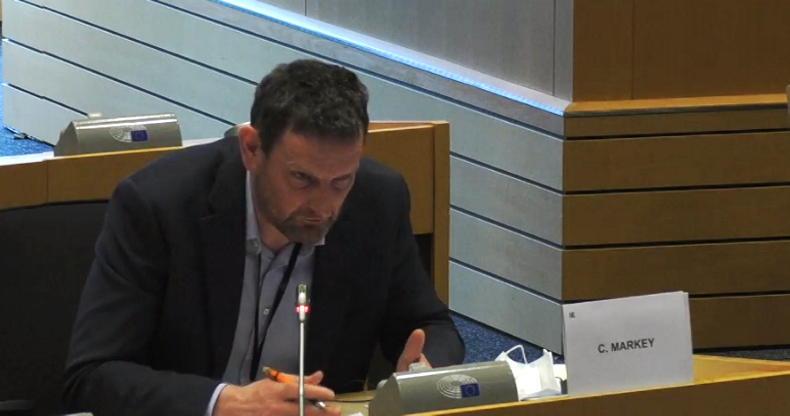Many EU countries have big plans for offshore wind farms in the near future. By 2050, it is estimated that 30% of the EU’s electricity demand will be met by offshore wind.
Currently there are 110 offshore wind farms within the EU with more than 5,000 wind turbines.
Ireland has a particular advantage when it comes to offshore wind given our large sea territories which are mostly located in the Atlantic.
However, the construction of these wind turbines can have severe negative impacts on marine life and fisheries according to EU MEPs on a report asking for measures to safeguard fishers’ livelihood.
Damage
MEPs highlight that coastal and small-scale fisheries, which account for 80 % of all fishing vessels in the EU, can be particularly harmed by the installation of new wind turbines in the sea.
They state that member states should ensure that wind farms are placed away from fishing grounds and only built if there’s a guarantee of no negative environmental, ecological, socio-economic and socio-cultural impact.
Otherwise they say that member states should anticipate the requirement for compensation for fishers whose activity is affected.
More research needed
To minimise the risks of the large-scale roll-out of offshore wind farms, the European Parliament has also called for more research on how to avoid and mitigate its negative effects on the sea basin during construction, operation and decommissioning.
MEPs add that other renewable energy systems – such as floating wind farms, renewable hydrogen, wind and solar energy – could be more appropriate in some areas where fishing activities are taking place.
Jury is still out
Speaking to EuroParlRadio Irish MEP Colm Markey said that the jury is still out on the overall impact of windfarms.

MEP Colm Markey said that the jury is still out on the overall impact of windfarms.
While the ability to fish is impacted by the siting of windfarms, windfarm developments need support services, which can help sustain ports and local communities he says.
He argues that a certain amount of windfarm profits should be reinvested in local fishing communities.
Many EU countries have big plans for offshore wind farms in the near future. By 2050, it is estimated that 30% of the EU’s electricity demand will be met by offshore wind.
Currently there are 110 offshore wind farms within the EU with more than 5,000 wind turbines.
Ireland has a particular advantage when it comes to offshore wind given our large sea territories which are mostly located in the Atlantic.
However, the construction of these wind turbines can have severe negative impacts on marine life and fisheries according to EU MEPs on a report asking for measures to safeguard fishers’ livelihood.
Damage
MEPs highlight that coastal and small-scale fisheries, which account for 80 % of all fishing vessels in the EU, can be particularly harmed by the installation of new wind turbines in the sea.
They state that member states should ensure that wind farms are placed away from fishing grounds and only built if there’s a guarantee of no negative environmental, ecological, socio-economic and socio-cultural impact.
Otherwise they say that member states should anticipate the requirement for compensation for fishers whose activity is affected.
More research needed
To minimise the risks of the large-scale roll-out of offshore wind farms, the European Parliament has also called for more research on how to avoid and mitigate its negative effects on the sea basin during construction, operation and decommissioning.
MEPs add that other renewable energy systems – such as floating wind farms, renewable hydrogen, wind and solar energy – could be more appropriate in some areas where fishing activities are taking place.
Jury is still out
Speaking to EuroParlRadio Irish MEP Colm Markey said that the jury is still out on the overall impact of windfarms.

MEP Colm Markey said that the jury is still out on the overall impact of windfarms.
While the ability to fish is impacted by the siting of windfarms, windfarm developments need support services, which can help sustain ports and local communities he says.
He argues that a certain amount of windfarm profits should be reinvested in local fishing communities.







 This is a subscriber-only article
This is a subscriber-only article











SHARING OPTIONS: